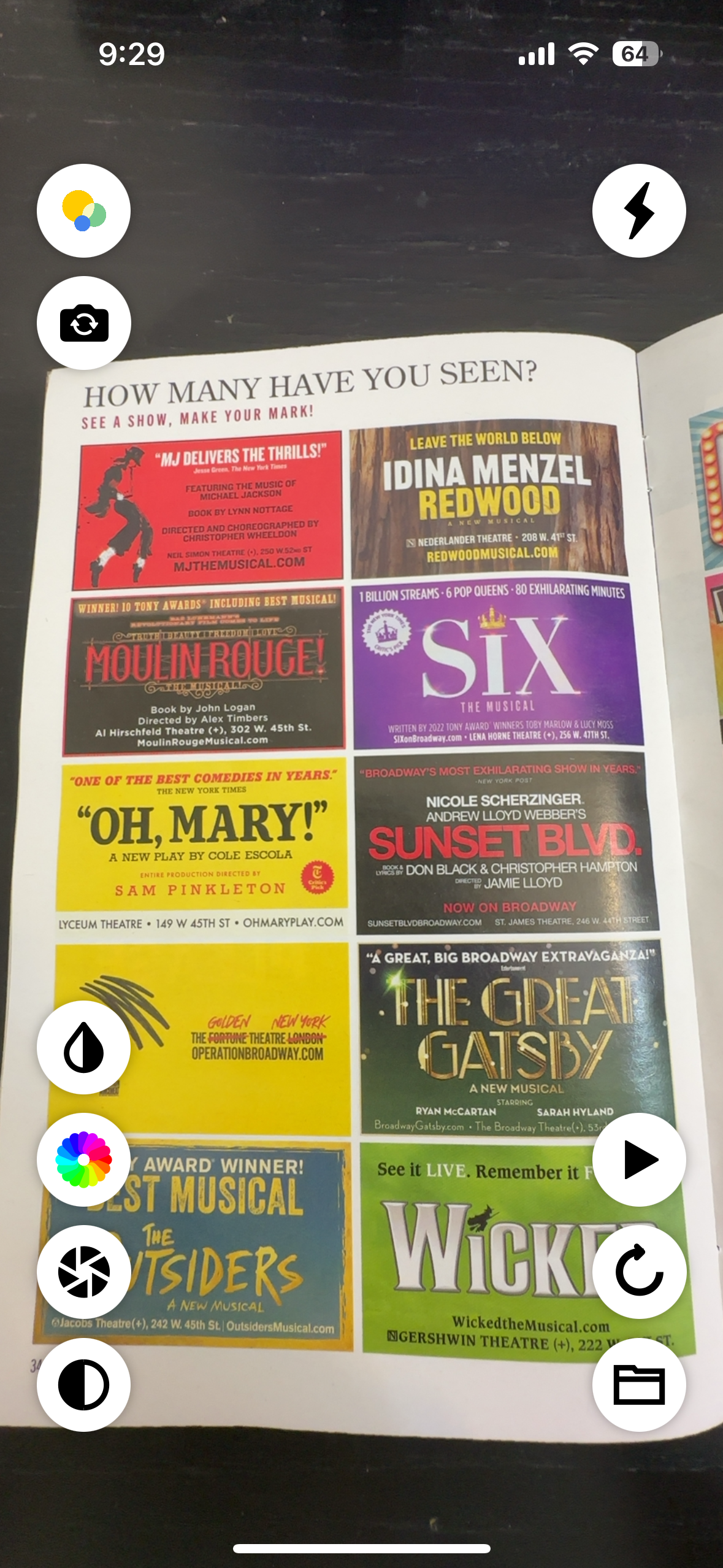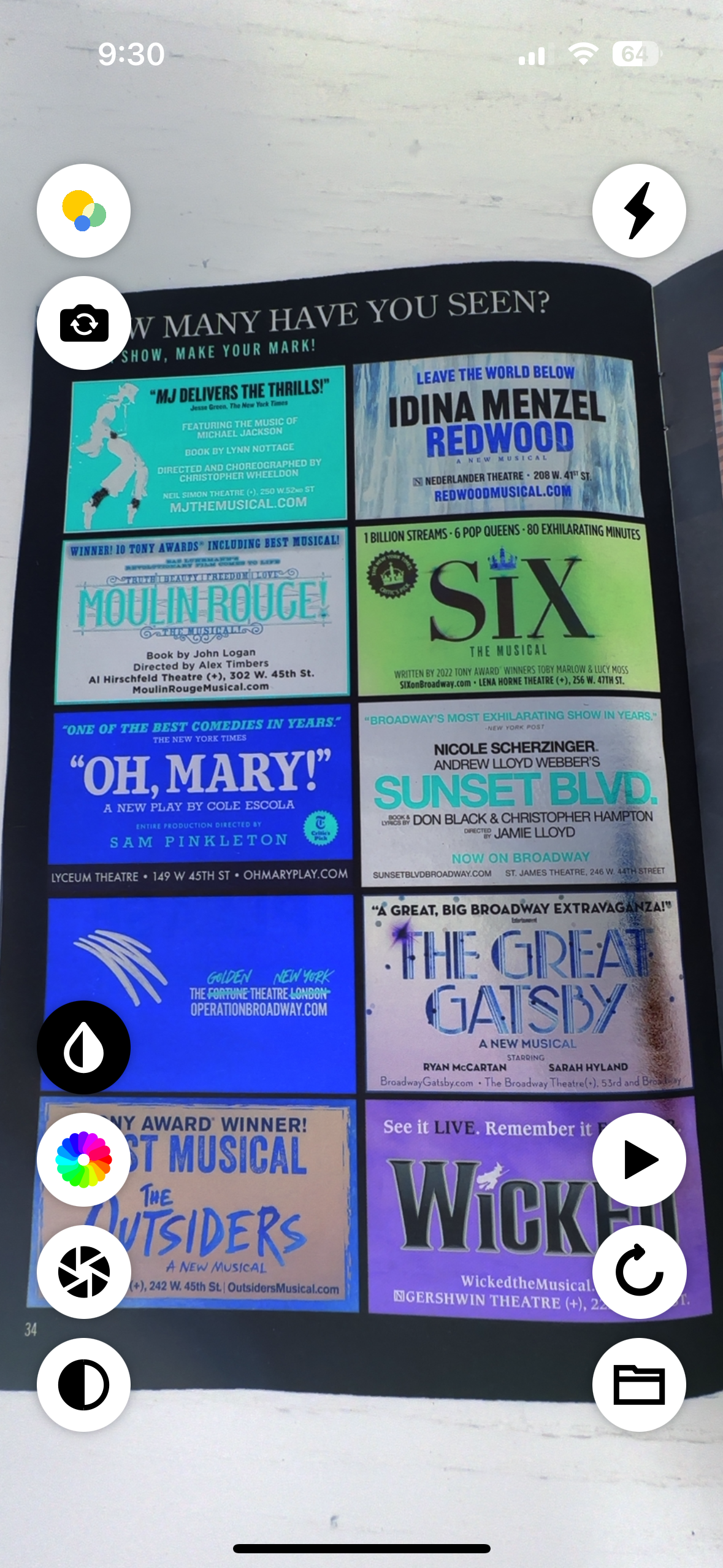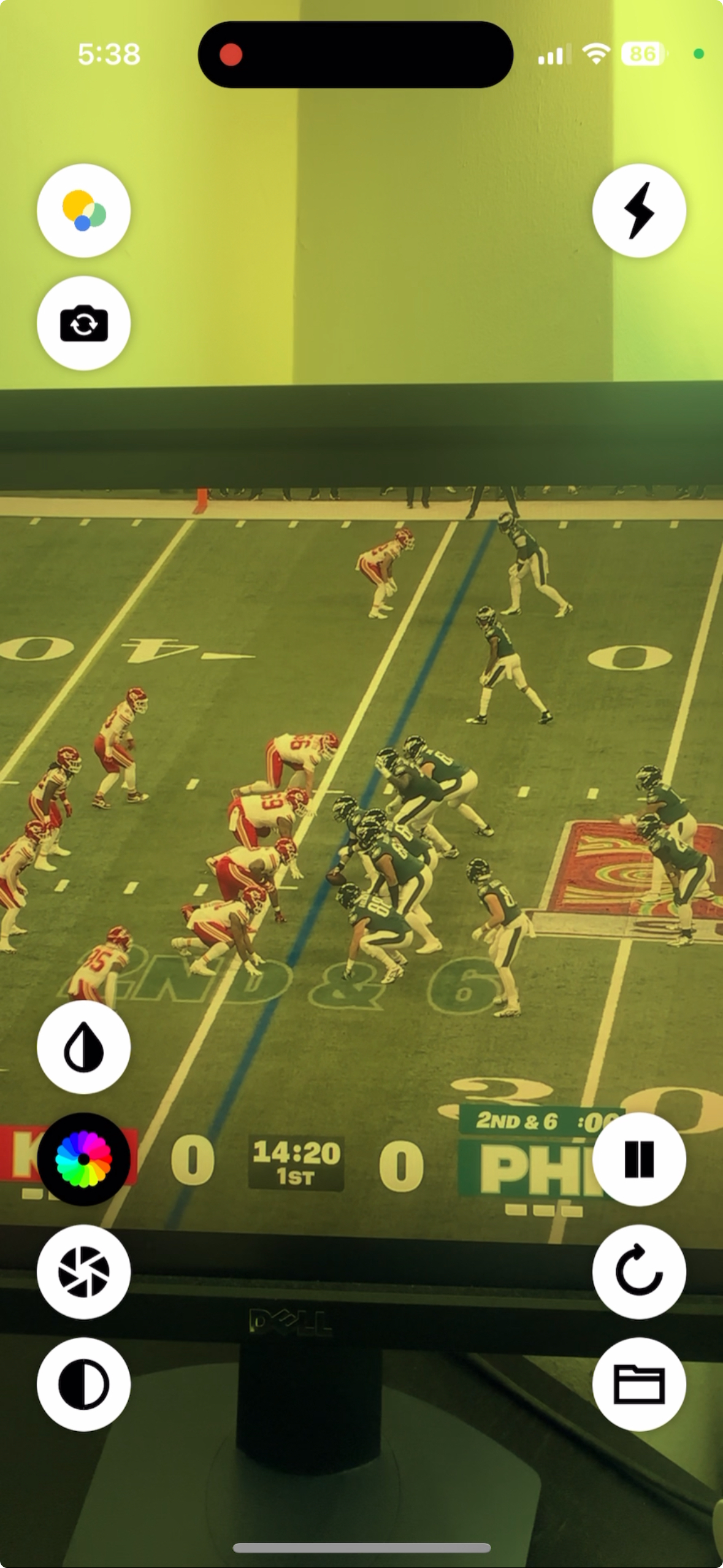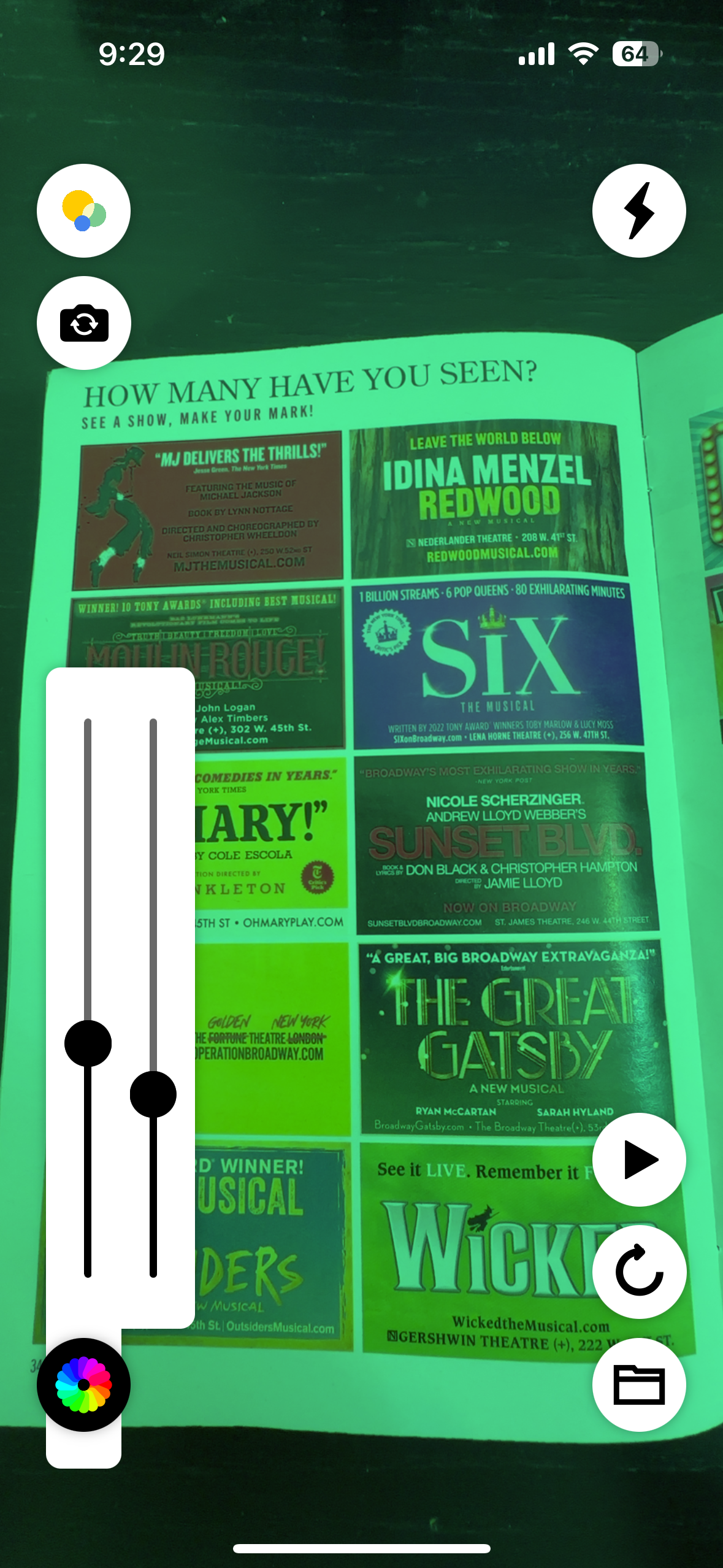ReBokeh is a low-vision application for enhancing the visual experience of people with vision impairments. “Re-Bokeh” means to re-clarify what is out of focus. Inspired by RUBY, a traditional portable video magnifier, founder Rebecca Rosenberg, diagnosed with Oculocutaneous Albinism, struggled to use outdated, costly, and difficult-to-use assistive technology and set out to create a tool herself. Beyond individual use, ReBokeh collaborates with cultural institutions and schools to improve accessibility, ensuring a more inclusive museum and educational experience for all.
Visual Customization


Designed through the lens of the social model, ReBokeh aims to modify the visual environment around people rather than requiring individuals to adapt to it. ReBokeh removes the barriers by providing a more accessible option without buying extra assistive devices. Users can use ReBokeh to adjust contrast, color hue, zoom, and lighting with the live camera on their phone. At least 2.2 billion people have a near or distant vision impairment worldwide. The “invert filter” turns light color to dark and dark color to light, switching the light and dark areas. People with low vision and light sensitivity might struggle to read text on a bright or low-contrast background. This feature can enhance the contrast of the text and background, making them easier to read. There are an estimated 300 million people in the world with color vision deficiency. 1 in 12 men are color blind (8%). 1 in 200 women are color blind (0.5%). People with color blindness can use the color hue feature to adjust the color through the screen. This feature can provide customized and personal experiences to meet different requirements.
Live and Static Mode


ReBokeh offers two viewing modes to support different user needs, aligning with the Functional Solutions Model, which focuses on using technology to minimize functional impairments. The advancement of high-resolution smartphone cameras and software helps address the challenges of visual accessibility by providing real-time and post-processing enhancements. Live Mode allows users to enhance their visual experience in real-time, making it ideal for watching live games, performances, movies, or other dynamic events. It provides instant feedback on the world around them, enabling users to react quickly to their surroundings. By comparison, Static Mode allows users to upload images or pause the live camera and then apply visual adjustments. This feature is beneficial for processing detailed information, such as reading complex text, analyzing documents, or reviewing fast-moving content that may be difficult to interpret in real-time.
Conclusion
ReBokeh is an effective and budget-friendly alternative to traditional portable assistive technology. It utilizes existing resources that most people already have, addressing potential challenges for individuals with visual impairments. Today, many low-vision applications incorporate artificial intelligence and voice assistance, expanding possibilities through advanced software. For instance, Microsoft Seeing AI enables users to recognize their surroundings, detect people, gauge distances, and even read text aloud. These features could serve as inspiration for future enhancements to ReBokeh, offering users additional ways to navigate their environment. Such applications provide convenience, affordability, and flexibility, making assistive technology more accessible. With the advancement of smartphones, these innovations could shape the future of assistive technology, fostering a more inclusive world without requiring additional devices.
References
https://www.cdc.gov/vision-health/data-research/vision-loss-facts/index.html#:~:text=Vision%20loss%20and%20age,more%20than%20double%20by%202050.
https://clintoneye.com/services/color-blindness/#:~:text=Facts%20about%20Color%20Blindness%20and,are%20color%20blind%20(0.5%25).
https://www.rebokeh.com
